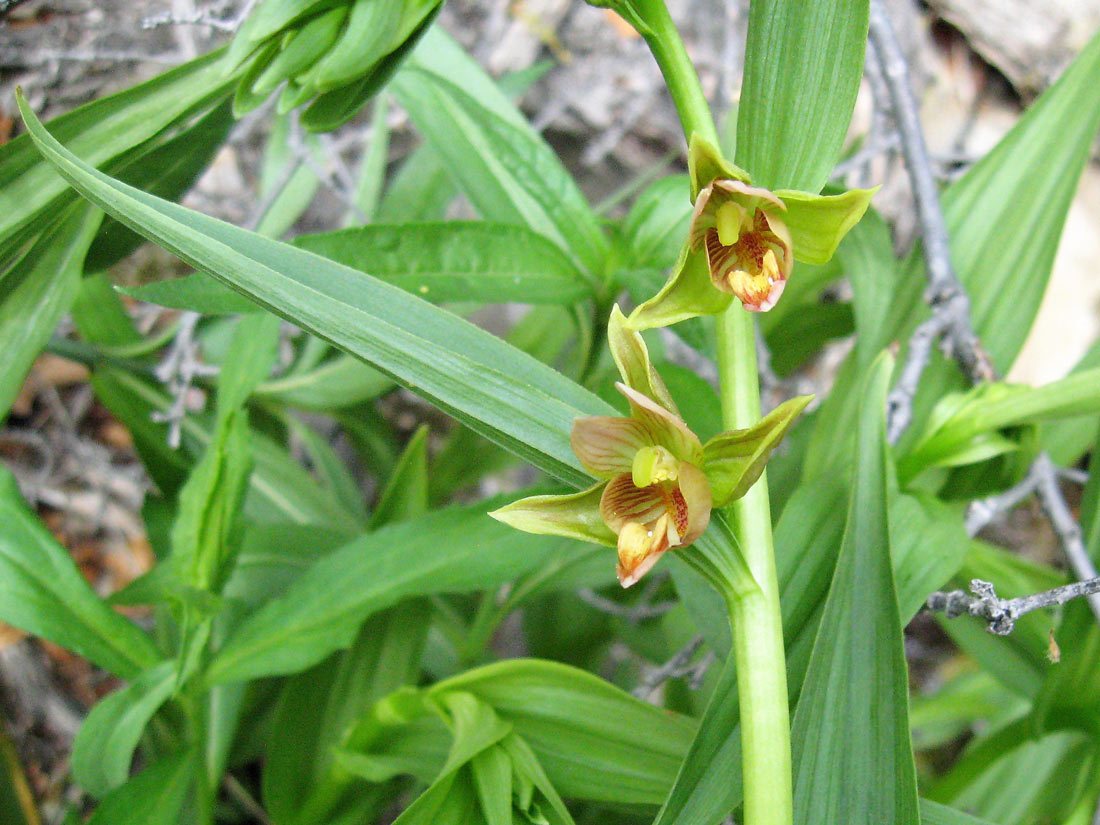Scott Smith's Colorado Orchids
The Native Orchids of Colorado
Our native or wild orchids of Colorado are found growing in the plains–they are growing along the foothills–you find them high in the mountains–you find them where you previously use to trod and tromp. Mother Nature has a way of letting the rarest of these beauties grow along side of roads and trails. Sometimes even in the middle of them. They grow out in wet boggy areas. Some even thrive growing right out of the crags and cracks of large rocks. Some have their existence growing in crushed granite and pine needles. Others love to live by the rushing streams and flood plains where the soil is much richer. Yet others appear as if to grow purely out of pine needles.
Weather in the plains or along mountain streams renders most of the plants very small. Their flowers are as shapely and elegant as their tropical orchid cousins; only on a much smaller scale. Some of our orchids are best appreciated through the lens of a magnifying loupe or glass.
The rarity of several of our Colorado orchids has landed them on the state and federal threatened and endangered species lists. Without concerted effort by the general populous, some may disappear entirely from Colorado. The largest of our orchids is the yellow lady’s-slipper, (Cypripedium parviflorum); the plant in good habitat can reach 18 inches tall or so. The smallest orchid in Colorado‟s inventory, Malaxis monophyllos var. brachypoda, is only about 3 inches tall and pure translucent green.
Is it possible still to find an unknown orchid type in Colorado? Yes. There are at least three species of orchids that are thought to be possibly growing within the borders of Colorado. The only thing required to find these plants are lots of fuel and determination. The love for the outdoors also plays a large roll.
Excerpt from Preface of The Native Orchids of Colorado, A Botanical Adventure of an Amateur, by Scott F. Smith, North American Native Orchid Journal, Vol. 13 No. 3, 2007
To view the full-sized image, click on the photo to enter the lightbox. In the lightbox you can enlarge the photo by clicking in the “i” to remove the text and click on the down arrow to remove the image selection. Use the arrows on the sides to go to the next image.
Giant Helleborine (Epipactis gigantea)
Giant Helleborine (Epipactis gigantea), Orchid Family (Orchidaceae), is critically imperiled in Colorado (S1) but apparently secure (G4) globally, as it is found from Texas to British Columbia and west to California. In Colorado it is found in hanging gardens, marshes near hot springs, and on seepy slopes, scattered on the western slope and known from the eastern slope near Poncha Springs (Chaffee Co.) and in Las Animas Co., plains to foothills. Blooms from June through July on the estern and western slopes. Photo by Scott Smith.
What is a Wild, Native, Terrestrial Orchid?
What is a Wild, Native, Terrestrial Orchid? This is easy. Wild: a plant that grows out of the grasslands or mountains, without the help of mankind. Native: a plant that is endemic to the area. Not a transplant from another part of the country or a different country. Terrestrial: meaning growing on or from the ground–Earth. Orchid, what is an orchid? It must be that highly elusive and difficult plant you see in greenhouses and its beauty unsurpassed. That plant that nobody can grow at home. Yes and no.
Orchids make up the largest of all plant families. With about 35,000 naturally occurring members to this family. This does not include the thousands of hybrids that have been developed since humans became addicted to orchids. Now that is an extended nuclear family.
An orchid, like most flowering plants, has stamen(s) and a pistil. But in orchids these are fused together into one. This called a column. The flower itself is made up of three petals and three sepals. One of the three petals is fashioned into what is called the lip. The lipacts as a platform, usually for a very particular pollinator.
The pollinator could be a wasp, a bee, a butterfly, a spider, a bird, a moth, and so many more other insects. But each type of orchid is usually only pollinated by one pollinator. Each particular orchid has developed a relationship with its pollinator that when its pollinator dies out as a species so might the orchid.
Excerpt The Native Orchids of Colorado, A Botanical Adventure of an Amateur, by Scott F. Smith, North American Native Orchid Journal, Vol. 13 No. 3, 2007

